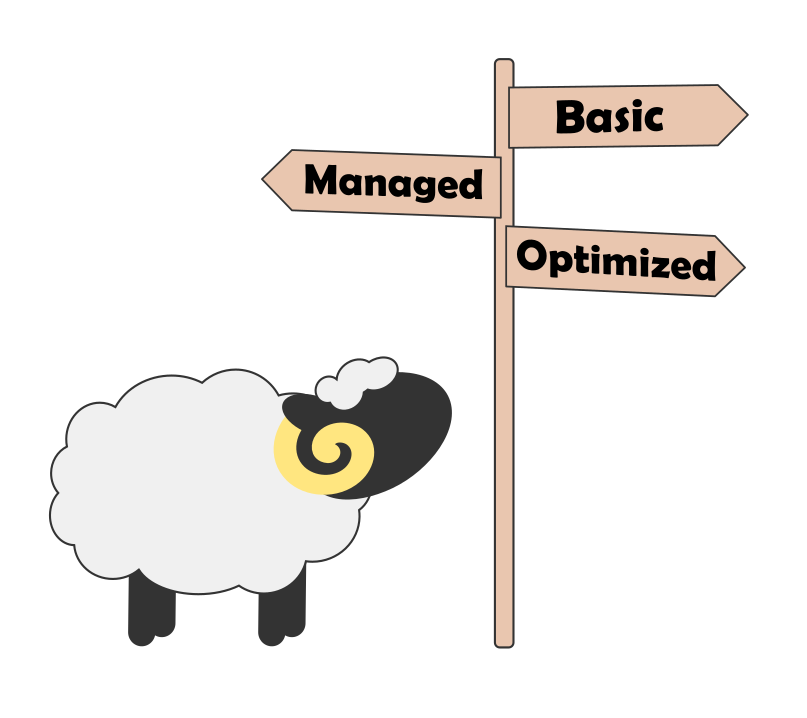Introduction
This section describes perhaps one of the highest priority areas of the service level capabilities of RAM. As a minimum an organization carrying out digital preservation needs to ensure that they can maintain an authentic and accurate copy of the digital content that they are preserving and can demonstrate that this is the case.
“Find someone who works for an organization that is similar to yours and ask what they are doing. There are some really wildly different approaches out there, so take the time to understand why they are doing what they are doing rather than just what they are doing.” - Hania Smerecka, Lloyds Banking Group
-
It is important to gain an understanding of the different risks you are trying to mitigate against with your bitstream preservation activities and storage architecture - you can then put appropriate steps in place to reduce the likelihood of problems occuring.
-
Do not be afraid to ask questions of third parties who provide your storage services, but do also bear in mind that your service provider may be using services from another third party provider. It could may take a little bit of effort to fully understand how your digital content is being stored.
-
If you outsource storage, you may have a lack of control over bitstream preservation and how it is carried out. Can you trust that the service provider will do it well? Remember that you can also take some steps to mitigate bitstream preservation risks yourself - you may be able to generate and retain your own checksums for your preserved content and run checks periodically.
-
Do not be afraid to ask for help if you are not a storage expert (many of us aren’t!) - find experts in your own organization and ask them questions.
-
Think carefully about which staff should have permissions to work with preserved content. If you have a digital preservation system there may be certain types of user role provided by default, but these may not meet all of your needs. Take care to map out the roles and permissions that your organization will need. Planning this at an early stage will save having to back pedal later on. Speaking to other organizations to find out how they do this (and most importantly why they chose to do it a certain way) is invaluable.
-
Document the different user access profiles and ensure these are reviewed periodically.
-
Take advantage of user groups and community discussion forums. There are likely to be others in the digital preservation community who are using similar services or solutions to you and it may be helpful to talk to them and compare notes.
-
A risk driven approach to Bitstream Preservation - this Technology Watch Guidance Note from Paul Wheatley describes a risk based approach to storage for digital preservation.
-
Which Checksum Algorithm should I use? - this Technology Watch Guidance Note by Matthew Addis doesn’t just answer the question in the title, it also includes a great overview of checksums and their use in digital preservation.
-
NDSA Fixity Survey 2021 - a report on the second fixity survey carried out by the NDSA, it summarizes responses from 100+ practitioners on how they use fixity information to help manage their digital collections and provides a really useful set of information to benchmark your own practices against.
-
Tool demos within the Digital Preservation Handbook - for example those that can be used to create and verify checksums - Checksum by Corz, Fixity Pro and CSV Validator (which is used alongside DROID)
-
Digital Preservation Storage Criteria - a list of criteria, or design attributes, for storage that supports the work of digital preservation. It may be possible to incorporate criteria into tender or contract documents to lead to a clearer understanding of your needs and a more suitable solution.
-
Toward environmentally sustainable preservation - an article by Keith L Pendergrass, Walker Sampson, Tessa Walsh, and Laura Alagna which includes helpful suggestions on how to minimize the environmental impact of digital preservation.
-
COPTR - a helpful reference for tools that can be used to support activities around storage and file fixity.
-
Digital Asset Registers – a section of the Novice to Know-How training, which gives advice on how to create a Digital Asset Register (DAR)
-
Building Wellcome Collection’s new archival storage service - Alex Chan describes how the Wellcome Collection built their new cloud based storage service
-
Our approach to digital verification - Alex Chan describes the Wellcome Collection’s robust approach to digital verification
-
Cloudy Culture: Preserving digital culture in the cloud - a series of blog posts by Lee Hibberd of National Library of Scotland explores storage in the cloud (part 1, part 2, part 3, part 4)
-
Three Copy Nirvana? A Climb into the Clouds - Lee Hibberd from the National Library of Scotland details their progress towards getting three copies of their data stored












































































































































